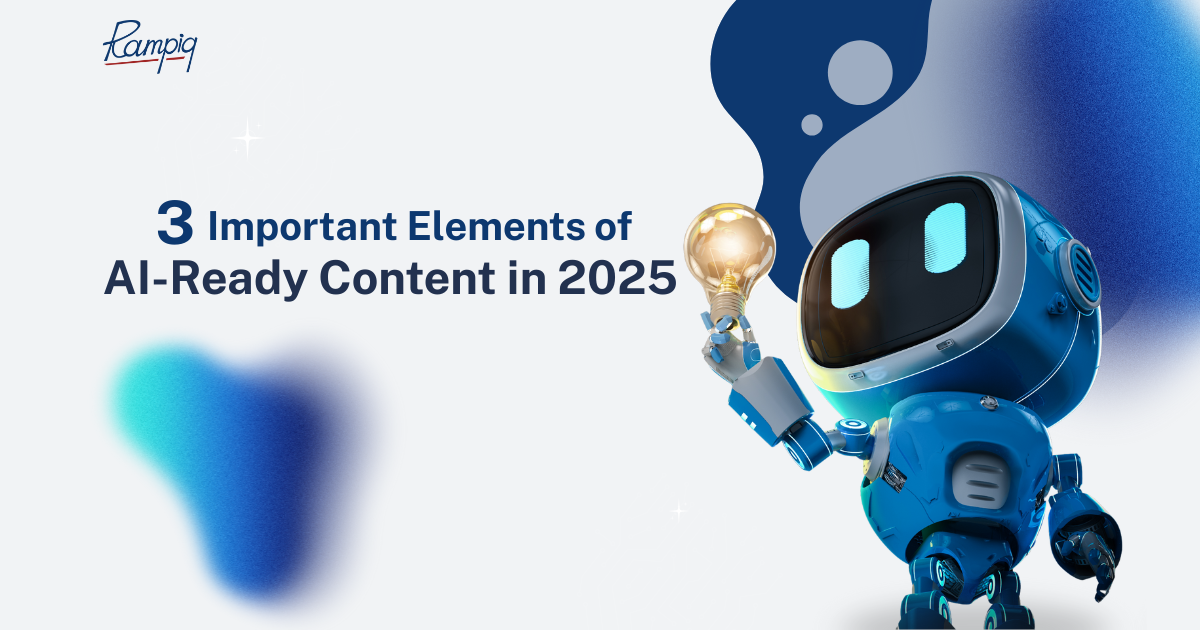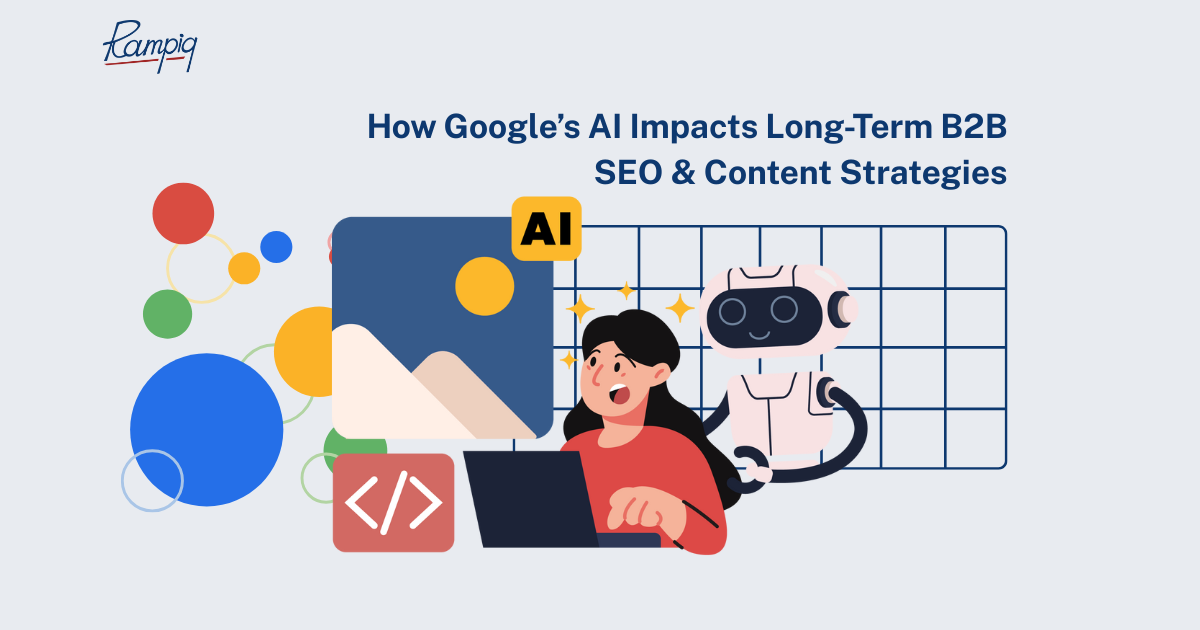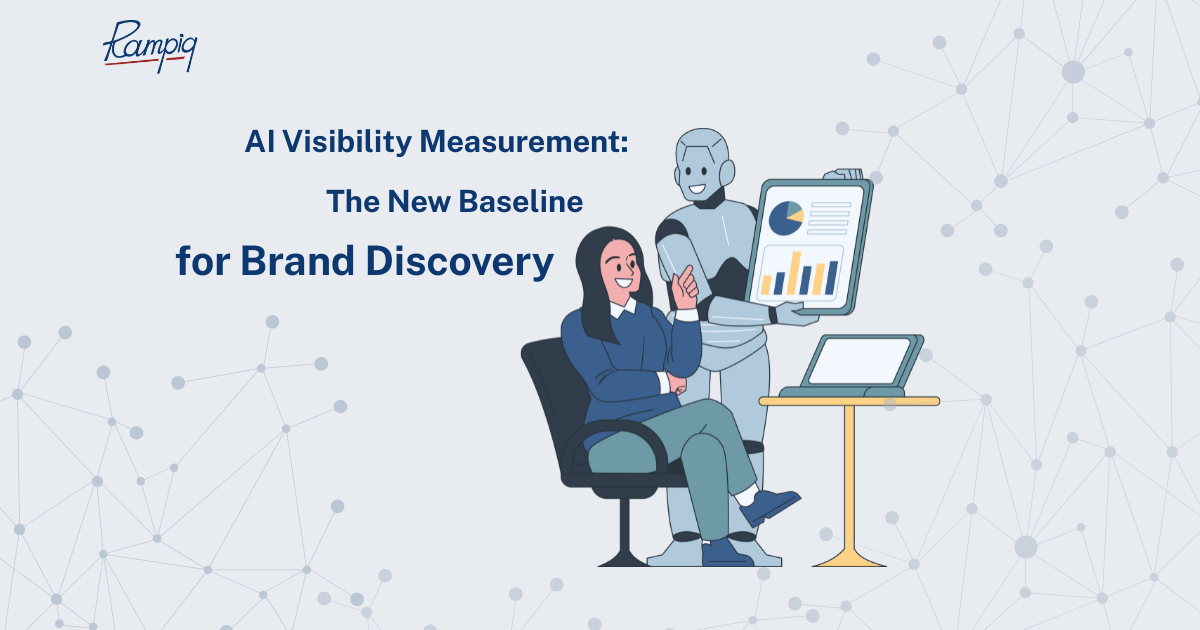Definition of demand generation
Demand generation is a top-of-the-funnel marketing activity that aims to reach out to a very wide audience. It also raises awareness about your goods or services and increases your brand authority.
Demand gen also makes the first steps at encouraging customers to make purchases from you at some point. Campaigns for demand generation usually involve creating a vast array of free information resources. They address the most burning questions your prospects may have about your product (writing case studies, blogging, social media management, etc.).
Definition of lead generation
Lead generation is a bottom-of-the-funnel marketing activity that captures contact information from qualified leads and aims to convert them into paying customers. It uses CTAs with lead gen contact forms to further nurture prospects generated by demand generation.
When a lead fills out the contact form, you obtain crucial contact details such as name, phone number, and email address. That information is then used to convert a lead into a customer through follow-up emails, calls, or remarketing campaigns.
What is the difference between lead generation and demand generation?
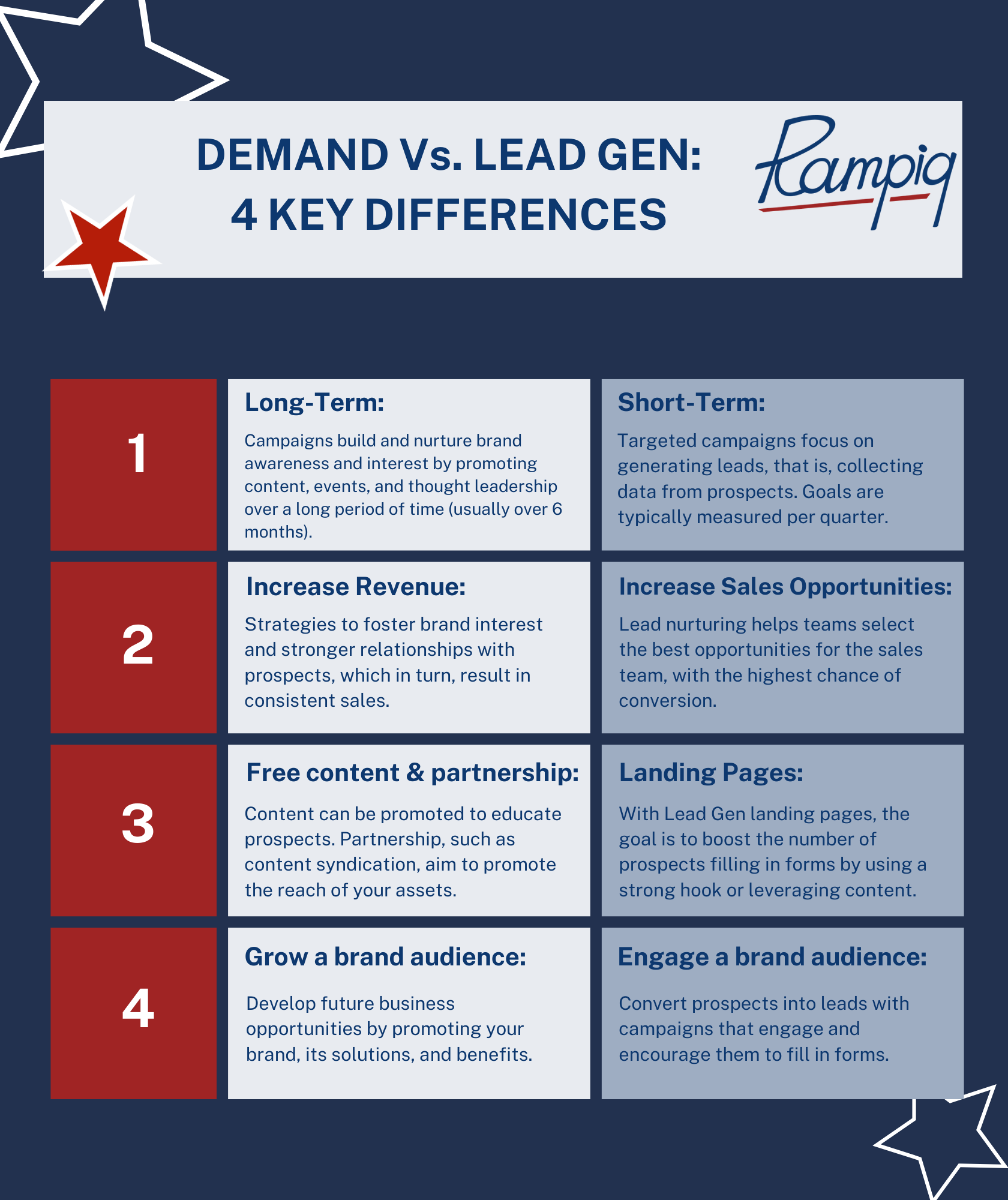
Demand generation and lead generation grow your business in different ways, with demand gen considered a top-of-the-funnel activity, and lead gen attributed to the bottom of the funnel.
The goal of demand creation is to increase public awareness of your business and the challenges you tackle. Even if the new audience doesn’t require your assistance immediately, it’s crucial to make them view you as a possible solution if a relevant issue develops.
On the other hand, lead generation is all about converting this demand into qualified leads. As the customer journey progresses, you boost the promotion of your product, positioning it as something that can address prospects’ problems.
READ ALSO: 3 Ways to Measure your SaaS Lead Gen in Dark Social Channels
Doing content marketing for demand generation vs lead generation
Demand generation content marketing focuses on, above all, brand awareness. As your business is aiming to get as much exposure as possible, you need to create optimized content and start spreading it across various channels. Provide people who are searching for answers with everything they may need to satisfy their needs. That includes informational blog articles, videos, webinars, podcasts, ebooks, case studies, and research.
And for your content to reach a wide audience, don’t only post on your website. Publish content on your social media, reach out to high-traffic websites for guest posting or cross-posting, repurpose content for email marketing campaigns, or contact an industry influencer to promote your video or podcast. You must make sure that there aren’t any obstacles between prospects and your content by making it easy to find and access.
Lead generation content marketing is characterized by a more targeted nature. At this stage, people who consume your content are already familiar with your brand, hence what you need is to push them closer to purchasing your product. Your content will be dedicated to more specific topics, which will attract users with higher transactional intent.
To get access to this valuable content, users are purposefully sent to a specific landing page with a lead gen contact form that must be filled out. This way, you obtain the lead’s contact information and you can now process them further. And, of course, the added benefit of limiting access to your content is that you prevent less qualified prospects from entering the funnel and reaching your sales staff.
Executing successful demand gen campaigns vs lead gen campaigns
Successful demand and lead-generating initiatives both need the deployment of a data-driven strategy. The success of demand generation is assessed by the number of your website visits, your average page-per-user session ratio, and your click-through rate. For lead gen, you will want to dig deep into contact from fill-outs, the number of calls your sales team made, and conversion rates.
Before that data even becomes the driver of your decisions, you must first clearly define your ICP – ideal customer profiles. It’s much simpler to target your high-priority customers with relevant messages once you’ve examined the data such as the job function, firm size, and industry of those customers.
Then identify your UVP – unique value proposition, i.e. the message and the information you want to send out to your prospects. It has to highlight the strengths and the unique features of your product or service.
Improving your demand generation and lead generation campaigns
Since demand generation is responsible for generating attention and interest, it needs to focus on getting your brand name known and recognized amongst a wide audience. Some key ideas are:
- Put content creation as your number one priority – If your website has few visits, you need to boost your content creation efforts to increase brand visibility. Your content should not be limited to informational articles in your company blog – host webinars, and record podcasts and videos. Also. write case studies and conduct and post industry-relevant research;
- Don’t hesitate to explore a multitude of brand-appropriate marketing strategies – You mustn’t limit yourself to basic marketing activities such as guest posting. Try experiential marketing, product placement, lifestyle marketing, guerilla marketing, or influencer marketing, depending on what your business is about;
- Track the relevant metrics – What gets measured gets improved. Analyze the dynamics of your website traffic, click-through rate, number of pages per session, and average session time. This will help you understand which topics generate the most interest and continue banking on those.
Lead generation must concentrate on turning the interest gained through demand generation into a desire to buy your brand’s product/service. Focus on the following:
- Create powerful lead magnets – A lead magnet is an asset that your company offers (whitepaper, ebook, exclusive deal) in exchange for contact details (name, email, phone). Using lead magnets enables you to gather valuable information on people who are interested in your product/service and reach out to them;
- Set up selling landing pages – A landing page is a special page of your website typically containing a lead magnet and serving as the final destination for your potential lead. This is where you sell yourself and encourage people to fill out contact forms;
- Create a functional lead qualification system – When you get leads, you need to assess their quality and relevance. For that, come up with a range of criteria, according to which you will qualify your leads as good or bad;
- Don’t neglect remarketing – Far from every first-time website visitor converts into a lead. Make sure you can remind them about yourself after they leave the website with such remarketing activities as paid ads or email campaigns.
Bringing together demand gen and lead gen for success
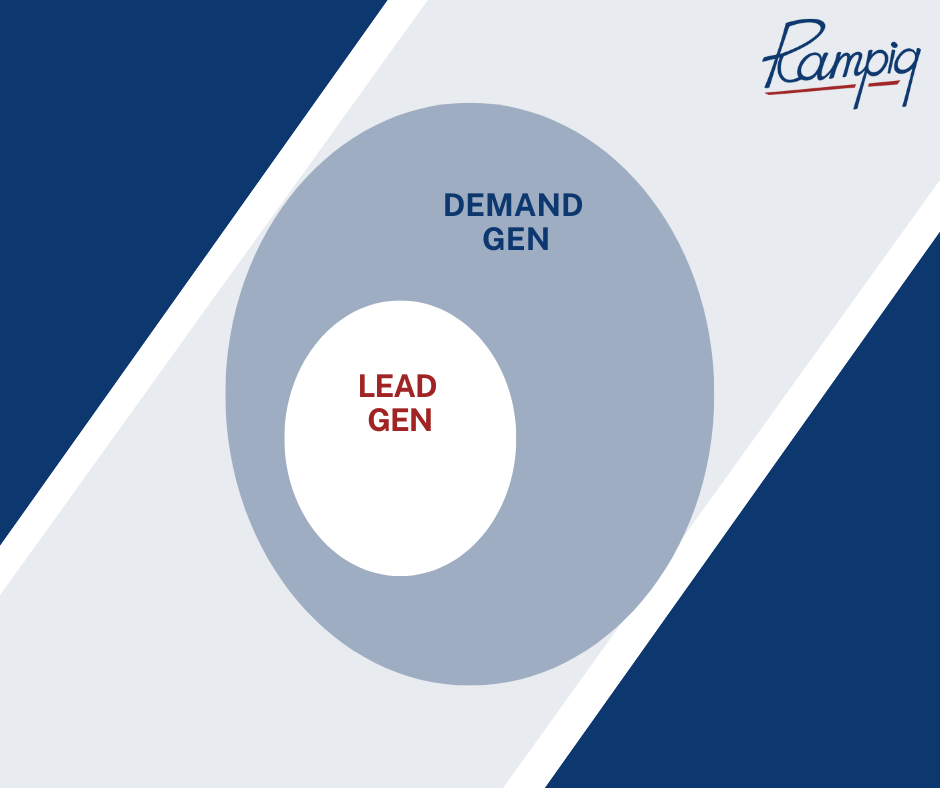
Demand and lead generation never function well independently. A business can have the best lead magnets, landing pages, and CTAs, but they will not generate enough traction if they have zero brand awareness, hence zero website visits. Concentrating only on building brand awareness with content and not selling yourself is also undesirable – the audience will view your website as an info source, not as an actual business they can buy from.
So how can demand and lead gen work well together in practice? We start at the top of the funnel with demand generation, building awareness through content. When creating content, make sure that you don’t limit yourself to info articles. As Harvard Business Review suggests, focusing purely on educational content causes an 18% decrease in purchasing ease amongst B2B buyers.
Content should also support decision-makers in their desire to make changes in their business by providing them with helpful advice. It’s recommended to use more “how-to” articles as opposed to “why” articles. Typically high-level management is aware of the reasons why they need to change, but don’t necessarily know about the ways to do that.
It’s also important to tailor your content toward specific decision-making roles in the company. According to CMI research, account-based marketing saw a big rise in popularity as a demand gen strategy – up to 41% in 2022 from 28% in 2020. The moment we provide decision-makers with a sufficient amount of diverse and insightful content, they will start considering purchasing from you.
Transforming consideration into a desire to buy is where lead generation gets involved. Similarly to how we create diverse content for demand gen, we need our lead gen to also match different search intents. But this time our content creation and organization will need to have a more selling character, rather than simply giving information. For informational queries, create valuable lead magnets that visitors would want to access, even if they needed to leave their contact details for that. For commercial queries, i.e. when visitors are already looking to buy, build the content around soft selling one of your products.
Remarketing will also help generate purchasing desire in past visitors and subscribers. Regularly send out engaging content by email or set up a paid ad campaign to drive past visitors back to relevant landing pages.
To reach the final sales cycle stage – action, it’s recommended to use well-placed and well-structured CTAs (call-to-action). Utilize contextual CTAs for maximum effect – these messages are customized to the page the visitor is reading right now. This can be done by implementing a smart chatbot that will pop up in a corner with a relevant message.
Conclusion
Demand gen is informing people about how your product can address their problems by providing them with easy-to-access, free info material without much commercial intent. The goal is to attract a wide audience and increase your brand‘s visibility. Lead generation, on the other hand, focuses on actively highlighting the benefits of your product and setting it apart from rivals – making a more selling effort. The objective is to draw in a particular demographic that is most likely to be converted into paying customers.
Demand gen vs lead gen is not really a “vs” to begin with. Yes, demand generation and lead generation are different in nature, but they make a good team and work towards the same goal – getting the business customers that will pay you and pay you well.




